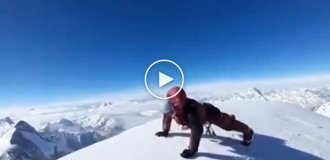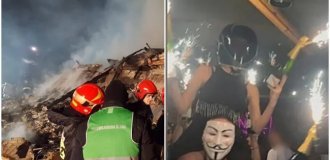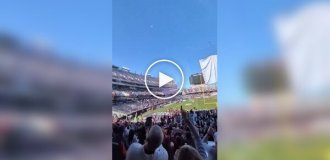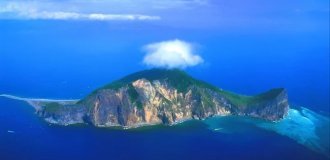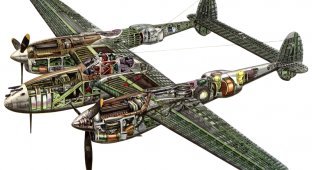A6M Zero. The best carrier-based fighter of the Imperial Japanese Navy (39 photos)
Before Pearl Harbor, Americans underestimated the Imperial Japanese Air Force.
In 1943, the United States recognized that the rapidly climbing, vulnerable Japanese Zero was a real triumph. Let's get acquainted with the legend of the Pacific Ocean. 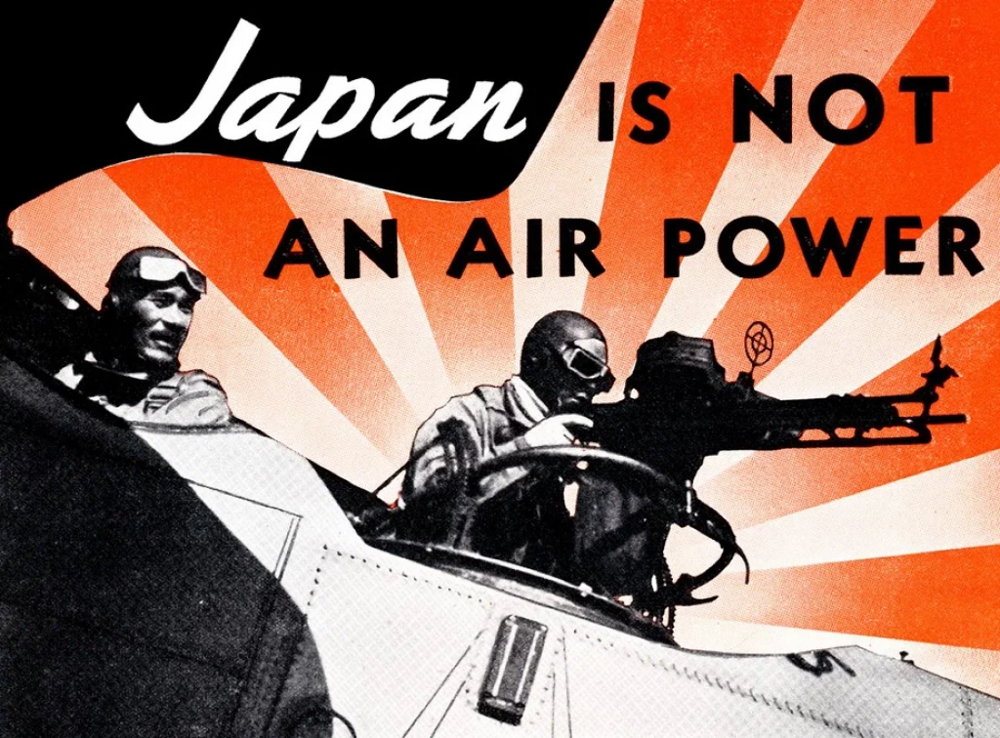
In 1936, a fighter aircraft was adopted by the fleet aviation f. Mitsubishi A5M (Allied code designation Claude) aka Type 96, built to the 9-C specification. For its time it was very perfect carrier-based fighter.
The Royal Navy at the time flew the Hawker Nimrod, a biplane with fixed landing gear, and the US Navy flew F3F biplanes. 
It should be said that he was not the first deck monoplane, as they usually say. The first deck monoplane was the French Devuatin D376, however, according to the parasol scheme. 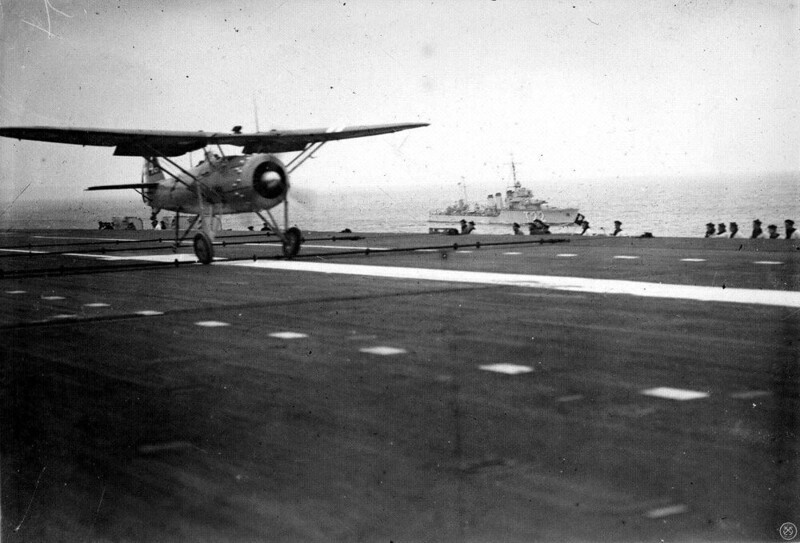
To replace the A5M, the next generation car was to be created. Why was the 12-C specification developed? January 17, 1938 these requirements of the terms of reference were transferred to two companies: Nakajima and Mitsubishi.
The 12-C specification was very difficult:
— maximum speed not less than 270 knots (500 km/h);
- climb 3000 m in 3 min. 30 sec.;
- flight duration up to 1.5 hours in combat mode and up to 8 hours in economy mode with an external tank;
- armament two 7.7 mm machine guns and two 20 mm cannons, the possibility of hanging two bombs of up to 60 kg caliber;
- radio station and radio compass;
- wingspan of no more than 12 m - limited by the size of the aircraft carriers of the aircraft carriers of the imperial fleet;
- takeoff run with a headwind of 12 m/s no more than 70 m;
- in the absence of wind no more than 175 m;
- stall speed not more than 58 knots (107 km/h);
- run no more than 240 m;
- maneuverability at the level of the predecessor A5M. 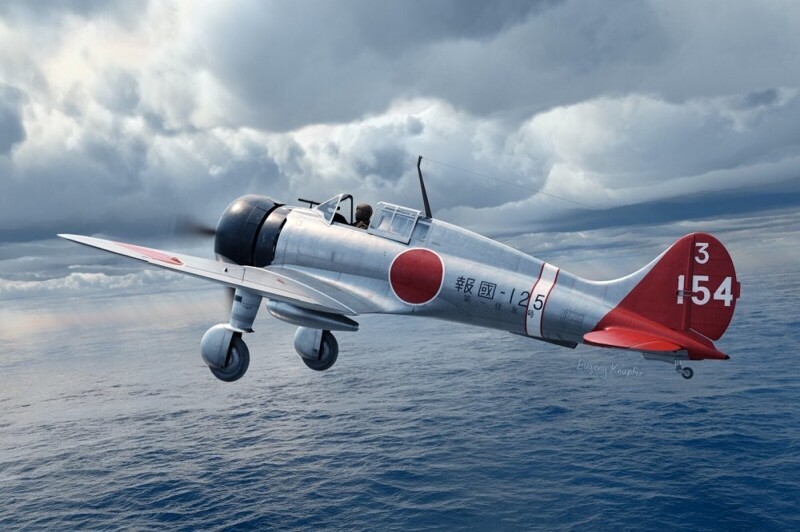
Requirements for performance, as well as for equipment, far exceeded anything previously achieved in Japan. Behind except for the mass of the aircraft. This parameter was not specified in the task.
Nakajima withdrew from the competition after evaluating the TK. Mitsubishi entrusted work on the new machine to engineer Jiro Horikoshi. To his command included Yoshitoshi Sone and Yoshio Ishikawa - construction, Denichiro Inoe and Shotaro Tanaka - propeller-motor group, Yoshimi Hatakenaka - weapons and accessories, Sadahiko Kato and Takeshi Mori - landing gear. 
The main problem for Horikoshi was the engine. Japan is not had at that time a powerful in-line serial motor. Choose accounted for three 14-cylinder radial engines: Zuisei 13,875 hp native f. Mitsubishi, Sakae 12,950 HP f. Nakajima and Kinsei 40th series, again native Mitsubishi with a capacity of 1070 hp
It was decided to abandon the most powerful Kinsei due to its mass and dimensions in order to fulfill the TK.
Horikoshi installed the weakest Zuisei 13 with a two-bladed screw. For 1939, this is clearly not enough. For example, on the I-16 from the Battle for Moscow installed M-63 in 1938 with a takeoff power of 1100 hp!
Why wasn't Sakae 12 originally chosen? Perhaps not wanted to promote their competitor from Nakajima. These are additional orders for their production. Capitalism - happiness - zashib.
The glider was made extremely light in order to fulfill the requirements TK. So it was decided to abandon the folding wings - the mechanism cleaning excess weight, the front of the fuselage along with the wings was a single one-piece design - all for low weight I repeat.
To ensure high maneuverability, the specific load on the wing should not exceed 105 kg/ m
2
. Hence the rather large wing area.
With an engine power of 875 hp. no pilot armor and protection of fuel tanks was not provided. Otherwise, TK would not be completed. Horikoshi had no choice but to lighten the glider. Yes, Mitsubishi turned to the military to soften some parameters 12-C specifications, but those remained adamant. 
Horikoshi used the latest in power kit for the first time construction material ESDT – extra-super alloy – aluminum-zinc-magnesium alloy company Sumitomo metal, which was before one and a half times stronger than the then grades of duralumin. Where the Americans for example, taketook a sheet of winged metal grade 24S 1 mm thick, their Japanese colleagues could use a sheet with a thickness of, for example, 0.8 mm with that the same strength. This made the design easier. The disadvantage of the newest alloy had a higher susceptibility to corrosion. Besides, licked aerodynamics. No gaps, everything is customized, rivets only flush - surfaces should not have any extra protruding details. Compare with Hellcat where the sheets overlap.
As the Americans say, those who do not know how to use engines are engaged in aerodynamics. 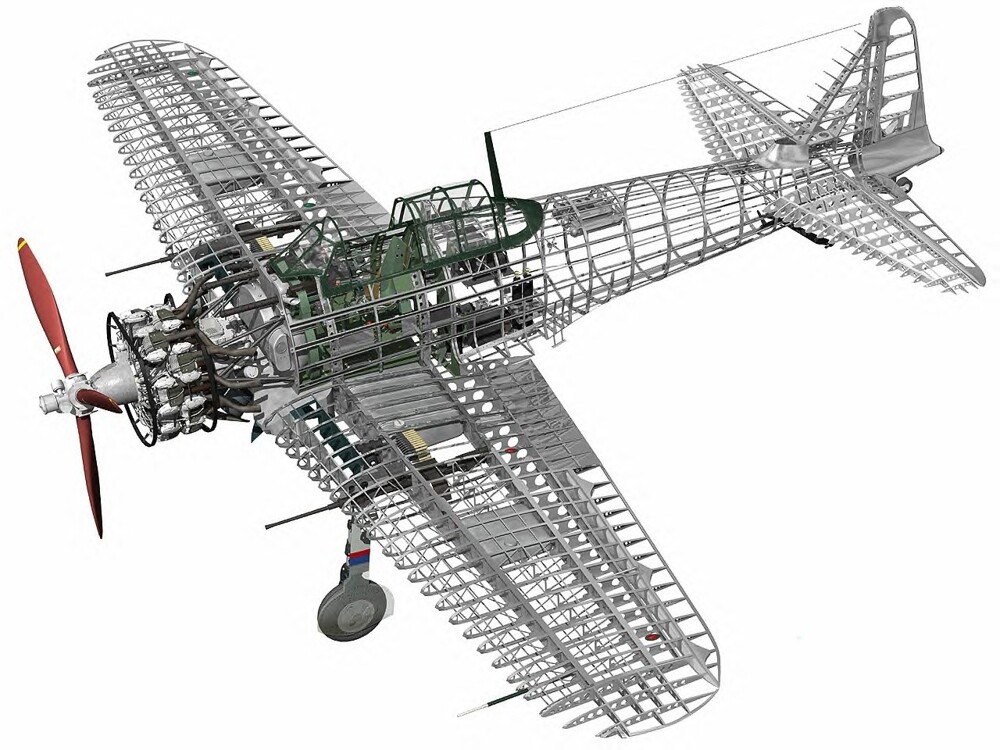
As for weapons. Are you familiar with guns? Oerlikon manufactured under license in Japan. The military insisted on installation of two guns Type 99. They were installed in the wing on the outside of chassis attachment points. At this point, the wing was reinforced to withstand additional loads.
https://www.youtube.com/watch?v=on6csHqCyBI
On April 10, 1938, the military was presented with a model of a new fighter. Heated disputes broke out between naval pilots. group pilots who preferred maneuverability to the detriment of the rest, represented Minoru Genda, a group of pilots who preferred speed, was represented by Takeo Shibata, who claimed that the speed the aircraft allows you to impose your battle tactics. A profitable tactic even despite the superiority of the enemy in maneuverability.
Heated debate was stopped by Jiro Horikoshi, saying that the new fighter would be both maneuverable and fast.
March 16, 1939 the prototype was ready. April 14 of the same year test pilot Mitsubishi Katsuzo Shima first took it into the air. 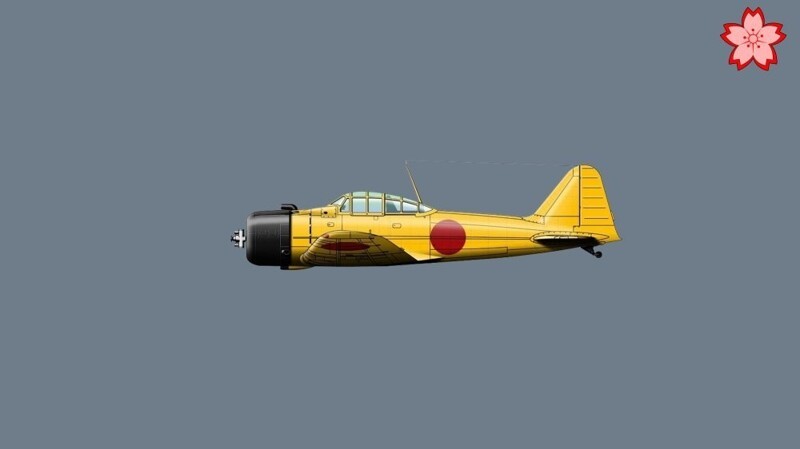
Based on the results of the first flights, it was decided install a new three-bladed propeller Hamilton Standard, manufactured under license.
Speed tests failed - the fighter reached only 491 km/h. When the task required 500 km/ h. Military demanded to install an engine from competitor Nakajima Sakae 12. On that moment, which had only one stage of the supercharger. 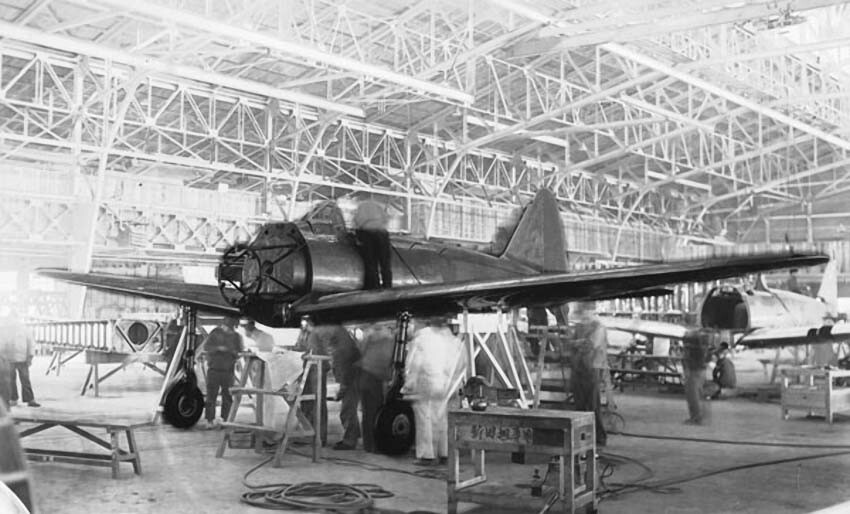
As for Sakae 12. Soviet Su-2 and Il-4 flew practically on a similar motor - M-88. They had one parent Gnome-Ron 14K Mistral Major. That's it.
There were some problems installing Sakae 12. This the motor had a midsection larger than Zuisei 13. I had to redo the hood and engine mount, but in such a way as not to increase drag and worsen review. As a result, the thermal regime turned out to be very intense. Designers had to make a lot of effort to solve this problem. Tin fairings were installed on the cylinders of the first "star", directing air jets to the cylinders of the second "star". But it was made later - during testing in China. 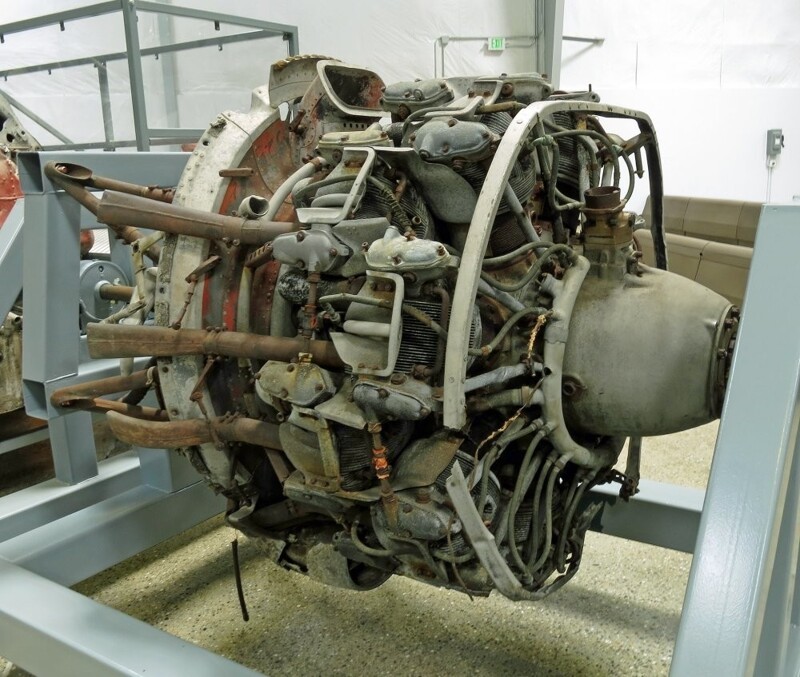
After the end of the test program, which lasted several months. September 14, 1939 the aircraft was put into service under the designation Rei-shiki kanjo sentoki (naval fighter model 0 (1940) A6M1. Or Reisen for short. From ray - zero, sen - fighter. Why 0? The fighter entered service in 2600 Japanese chronology (1940 from the birth of Christ). Therefore zero zero. Or just zero.
Pre-production vehicles were handed over to Oppama Air Base test pilots from the Yokosuka kokutai, where they received exclusively enthusiastic ratings.
Rumors of a great new plane spread among the flight crew of the fleet. Finishing work A6M came with a lot of pressure from the military, who needed fighter to cover the bombers during the war in China. Arguments engineers about the continuation of work on fine-tuning the machine were not heard and pre-production A6M1 were sent to the front. Detachment A6M1 led by Tamotsu Yokoyama and Saburo Shindo were poured into the 12th Rengo Kokutai (12th joint aviation group). To six fighters added more several that were tested on the deck of the aircraft carrier Kaga.
After their successful completion on July 31, the fighter was put into service under the designation A6M2 model 11. 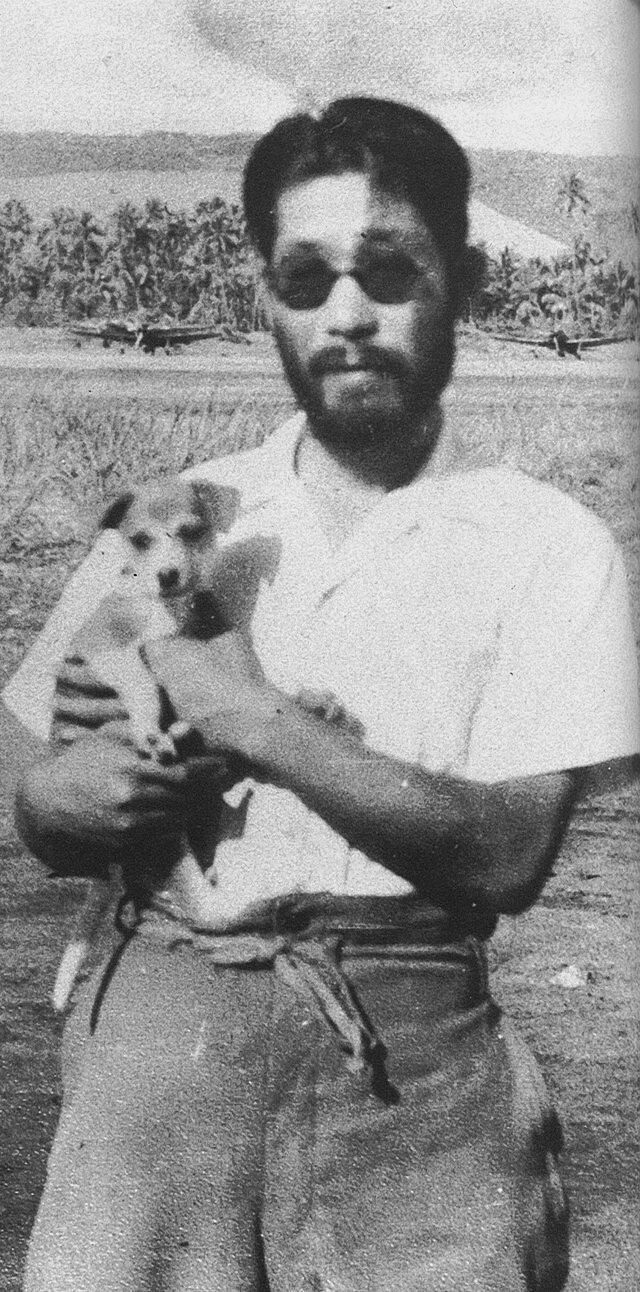
The baptism of fire of the new aircraft took place on August 18, 1940 when 12 newest A6Ms covered 50 G3Ms in a raid on Chongqing. The Chinese planes did not meet the group. For the first time, Reisen entered the fray On September 13, when the group under the command of Saburo Shindo encountered a detachment of 27 Chinese fighters. The Chinese did not expect the appearance of the Japanese in their chapterto the rear. Not a single fighter standing on armed with any air force in the world, could not fly to such a distance. IN in a matter of minutes, the Japanese shot down 13 opponents, 11 made emergency landing, subsequently all these machines were decommissioned due to receipt combat damage, and only three managed to escape. Japanese losses are not suffered. 
Claire Chennault, retired US Air Force officer reorganization of the Chinese Air Force, sent a report to the United States about the appearance of the Japanese the latest fighter, but on his numerous reports the American management did not respond. 
After the end of the Chinese business trip, changes, the main of which was the strengthening of the wing spar and the introduction folding wingtips - A6M2 model 21. To production the latest fighter was connected to the power of Nakajima. It is the engineers firms created a hydro-float aircraft A6M2-N. It should be told separately. 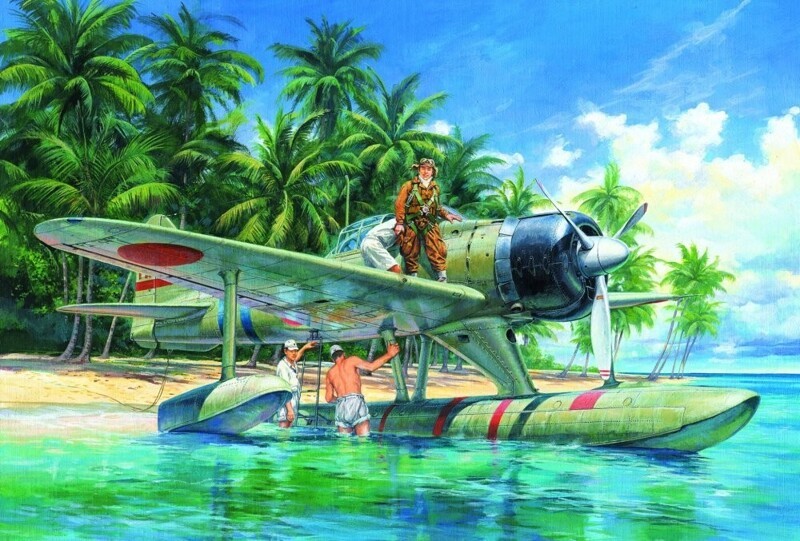
After the practical operation of the A6M2 in combat units the military demanded that Mitsubishi increase its airspeed. The maneuverability and power of weapons suited them. To increase speed a modification of the Sakae 21 with a capacity of 1130 hp was installed. and having two blower stages. Reduced to compensate for the increased weight the volume of the fuselage fuel tank. Cannon ammo load increased from 60 to 100 shells on the barrel by installing a drum of increased capacity and, respectively, increased in size, which forced the introduction of fairings on wing. Reduced size to improve handling at high speeds ailerons.
The first aircraft was built by June 1941. But flight tests showed that in addition to reducing the range, the gas tank was as mentioned above, maneuverability also decreased slightly due to dismantling wingtips, but the rate of climb and speed increased slightly. The new modification was assigned the index A6M3 model 32. True, its release began after Midway - in July 1942. Initially, the Allies had received the designation Hump. In general, the Allies had the Reisen code Zeke - short for the biblical Ezekiel. 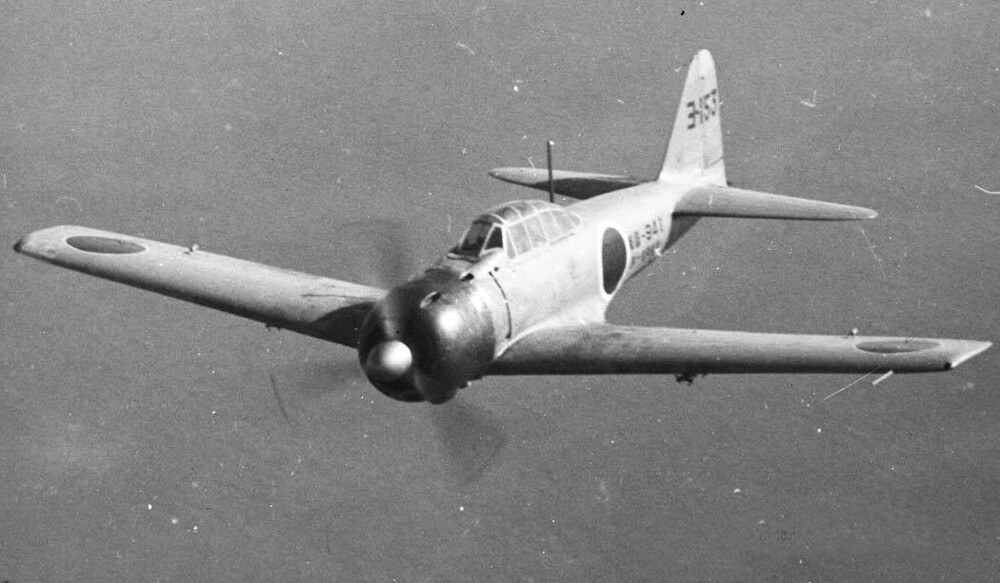
The use at the front forced the designers to return wing tips. Without them, he was very similar to his opponent F4F Wildcat. This is A6M3 model 22. In addition, this version had two wing fuel tanks were installed, and on the 22ko modification there were long-barreled Type 99 model 2 was installed instead of Type 99 model 1.
A6M3 model 32 and A6M3 model 22 were built only by Nakajima. 
The most mysterious option is the A6M4. About him after the war could not even remember the chief designer Jiro Horikoshi. Is it true, in fairness, it should be said that at the end of 1941, Reisen a new chief designer appeared - Mijiro Takahashi, who replaced Horikoshi who focused on Reppu's A7M. First of all under it management brought the dive speed to 660 km/ h due to the introduction non-folding wing and reducing its area. common exhaust the manifold was replaced with seven jets - one for each a couple of cylinders. The glider was lightened by almost 80 kg. armor protection still wasn't. All these activities have increased the speed to 565 km/h In 1943. This is A6M5 model 52. The prototype of this modification was tested in August 1943. In the same month, the debut took place American F6F-3 Hellcat in the battle near Marcus Island. 
Next modification A6M5a model 52a (ko) March 1944 received another reinforcement of the wing - the dive speed was increased to 740 km/h, cannon belt feed - 125 rounds per barrel, but body armor pilot, there were still no protected tanks. Hellcat battery just tore apart the A6M, while he himself held the blow of the Japanese fighter thanks to its robust construction.
A6M5b model 52b (otsu) is the first attempt to protect the pilot. Why did they introduce a semblance of bulletproof glass - two layers of plexiglass and ordinary plex with a total thickness of 50 mm. Installed a fire fighting system fuselage tank - a cylinder of carbon dioxide. In a fire, carbon dioxide filled the fuel tank and the engine compartment. In addition, one machine gun rifle caliber was replaced by a large-caliber type 3, representing an American Browning under the French patron Gokchissa - some mutant. This modification went into production in April 1944.
It was followed by A6M5s model 52s(hey). On this option radically strengthened the armament - rifle-caliber machine guns were removed, instead they installed three large-caliber type 3 in addition to two 20 mm guns. Appeared guides for suspension 8 10 kg unguided missiles. Finally, the pilot received full-fledged armor protection! Armored back 8 mm thick, armored glass 55 m thick. Protected fuselage fuel tank. But all this in the autumn of 1944. All this increased weight by 300 kg! Besides the motor. New Chief Designer Eitaro Sano rightly pointed out that the power is small, it is necessary to install Kinsei 62 with 1350 hp at that time, but the military rejected it suggestion - this motor was needed for a new modification bomber D4Y3 Shuisei. Little of. He was forbidden to conduct any design work on A6M for any other engine except Sakae.
He tried to get out of the situation by installing the system injection of water-methanol mixture. But this idea failed due to imperfections of this system.
An attempt was made to bring it to mind on the A6M6s model 53c, but it failed. 
The next modification was the A6M7. This fighter-bomber. The ventral assembly was redone on it pendants. Now, instead of the PTB, a 250 kg bomb was hung there. For a part machines installed Sakae 31 with the injection of a water-methanol mixture. In series the car went in the spring of 1945.
The latest modification was the A6M8 model 54c. Finally, the glider received a powerful motor - Kinsey 62 with a power of 1500 hp. This was the fastest Zero - 573 km/ h. In 1945 there are no words. Prototype of the new modifications took to the air on May 25, 1945. By the end of the war, not a single serial aircraft of this modification was not built.
In total, 10964 aircraft were built during the war years. 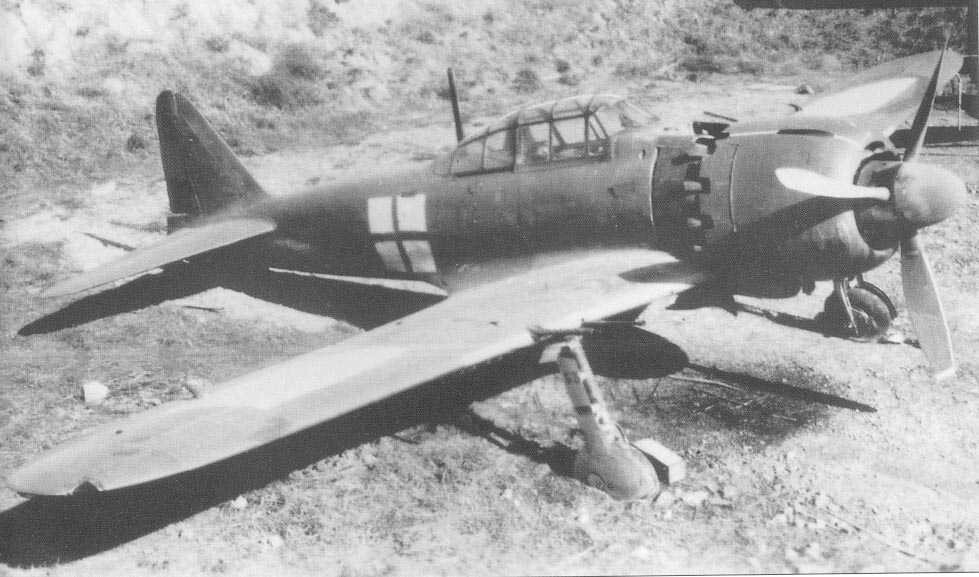
We will separately consider the educational modification A6M2-K. At first 1942, anticipating the need to speed up pilots' training program, Fleet commissioned the development of a modern two-seat training aircraft. Was it was decided to remake the A6M2 according to the program specification 17-C. Changes included a two-seat cockpit with a cadet in front and rear instructor, removal of the fuselage fuel tank and two 20-mm wing guns to save weight by adding small horizontal ridges on the sides ahead of the stabilizer, removing landing gear doors. The modification turned out to be successful and since November 1943 236 A6M2-K was produced, and a further 272 of these aircraft were built since May 1944 in Hitachi. A6M2-K were heavily used in Japan and on Formosa and other than the original designation as an aircraft advanced training, acted as target tugs and for strikes kamikaze. 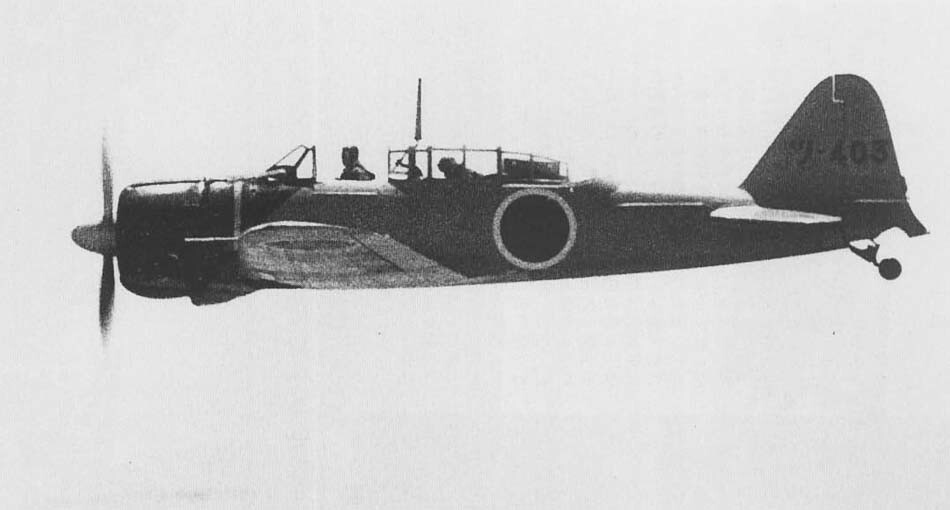
As for combat use. It's a workhorse Imperial Japanese Navy. The fighter was involved in all battles of the Pacific War. I won't talk about it here. Combat use and aces are considered by me in the video:
https://www.youtube.com/watch?v=WzQFvMVCGo4&t
Capabilities of the basic fighter of the Imperial Japanese Navy for combat pilots of the Allies were a complete surprise. And this despite the fact that the Americans had fairly accurate information about Reisen by the beginning of 1941. We recall the report of Claire Chennault about which mentioned above. Little of. Assistant U.S. Naval Attache for Aviation Stephen Jerica in January 1941 visited the annual Japanese air festival, where the new A6M fighter was put up for public review with a plate with all performance characteristics: speed, weight, motor power. He even looked at the A6M training battle against its army counterpart. After which he sent the data to his homeland. But there the report was not appreciated. Few In addition, he received a scolding for spreading misinformation. 
Americans did not believe in the possibility of the existence of such characteristics. In general, the first Zero captured in that war is not the Aleuts 1942, and China November 26, 1941 Even before the war with the United States. On this day a group of A6M2 fighters of the Tainan air group was supposed to fly from Taiwan to Saigon to escort a transport aircraft. Two group pilot flight foreman of the first article Shimezo Inoe flew on Reisene with tactical number V-172, his wingman flight foreman second Takaaki Shimohigashi flew a Reisen with tactical number V-174. They were supposed to fly southwest towards Tainan Island, but lost visual contact with the main group. Their problem was that on both fighters everything was removed to increase the flight range radio equipment. INthey eventually landed on the beach of Hainan Island. It should be said that Inoe landed the plane successfully, but Shimohigashi damaged his fighter.
Apparently, they thought they landed on the territory controlled by their troops. Their fate is unknown. Most likely they were executed by the Chinese. Both fighters were promptly removed from the beach. What Interesting. Wing Zero was lifted by only 4 people. 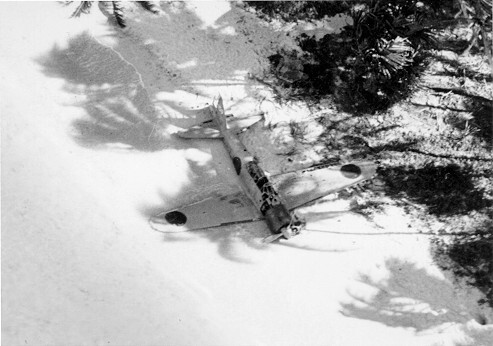
On June 4, 1942, a raid took place on Dutch Harbor (Alaska), led by Rear Admiral Kakuda of the 2nd Koku Sentai (aircraft carriers "Ryujo" and "Junyo"). However, at the same time, the A6M2 piloted by a non-commissioned officer Tadayoshi Koga was injured and attempted to make an emergency landing. on the island of Akutan. Mistakenly mistaking a swamp for a flat and clean area Koga opened the canopy, raised his seat and extended the landing gear. Right after just as the wheels touched the ground, the plane swerved and Koga died. Spotted by US troops a few days later, the plane was pulled out and in August 1942 transferred to the coastal base of the fleet aviation in San Diego. 
Following repairs, the aircraft was initially tested Lieutenant M.K. Hoffman and Lieutenant Commander Sanders of flight test unit of the coastal base of naval aviation in Anacostia. These tests confirmed the data sent from Japan before the war.
You can read more about the trials of the trophy Zero, by following the link: https://www.lonesentry.com/articles/ttt08/zero-fighter.html
As for them. The Americans compared Reisen with R-38F, R-40F, R-51 with Alisson, F4F-4, F4U-1. Let's go straight to the conclusions, so as not to lengthen the roller.
Due to its low wing loading, the Zero fighter has maneuverability superior to the maneuverability of all our fighters currently in service.
To successfully fight this aircraft, it is necessary to maintain a speed of more than 300 miles/ h (483 km/ h).
When developing tactics against the Zero, two facts should be taken into account:
1 Low roll rate "Zero" at high altitudes.
2 The inability of the Zero engine to continue running when negative overloads - Sakae 12 had a float carburetor.
All pilots sent to combat areas where the presence of "Zero" is expected, should be instructed about as follows:
1. Never try to engage in a maneuvering battle with the "Zero"
2. Never attempt to maneuver the Zero at speeds below three hundred (300) miles per hour [483 km/h], unless you are behind him.
3. Never chase a Zero on a vertical at low speeds. (For aircraft in service at high angles, start stalling, while the "Zero" will only reach the most favorable for maneuvering speed).
Aircraft operating against the Zero must be as lighter; all equipment that is not necessary for the fight.
Large ailerons provide Zero with high maneuverability on speeds up to three hundred (300) miles per hour (483 km/h). At a speed higher three hundred (300) miles per hour becomes almost impossible to change turn direction.
The outstanding characteristic of the Zero is its high candle speed. This "candle" is an almost vertical climb, which can last from one and a half thousand (1500) to two thousand (2000) feet (457-610 m) depending on start speed maneuver. This should not be understood as an indicator of climb rate. of this aircraft. "Zero" does not have a high rate of climb. "Zero" very stable and has excellent stalling characteristics.
The most important features to take into account attention when developing a successful tactic to counter the "Zero", are its insufficient roll rate at high speeds and failures its engine under negative overloads. 
About the combat use was mentioned above. Separately, I will only touch on kamikaze.
The Americans dealt more and more tangible blows, knocking out remnants of experienced pilots, who were replaced by unfired newcomers. Seeing no way to turn the tide of battles, Clarke was formed the first detachment of special attacks - kamikaze (divine wind) of 24 pilots. On October 25, 1944, a group of five Zeros with suspended 250-kg bombs attacked and sank an escort aircraft carrier Saint-Lo, and the next day other ships were attacked. In general difficulties as a result of the first kamikaze attacks, 5 ships were sunk, 23 was badly damaged. 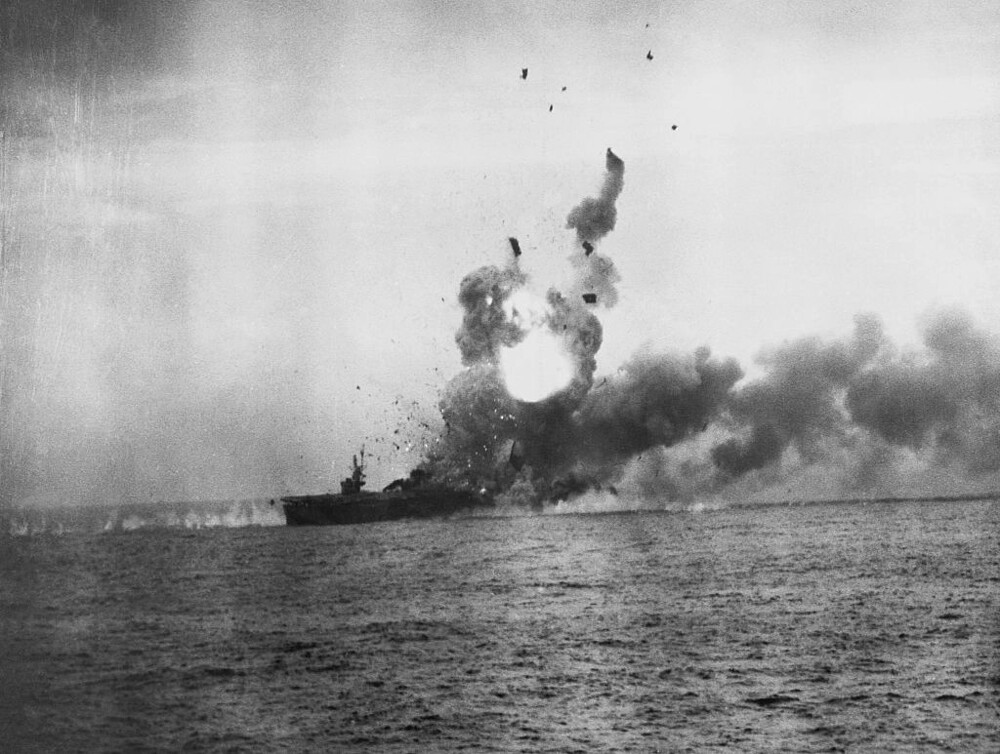
Encouraged by success, the Japanese command forced creation of special operations units. But John Touch, who previously developed the famous "braid", parried the tactics of kamikaze by introducing tactics "Big Blue Blanket"
I tell more about the braid in the video about the combat wildcat application: https://www.youtube.com/watch?v=-HjkyashZGI&t=
At the distant frontiers, Japanese aircraft met air patrols on the F6F Hellcat, and from 1945 on the F4U of Kosrara. 50 miles from the main groups housed destroyer escorts equipped with radar and providing interaction with interceptors. In addition to the measures taken for the direct protection of aircraft carrier formations, Touch insisted on conducting massive attacks on Japanese airfields. All these actions allowed to significantly weaken the effectiveness of kamikaze attacks. British fighters played a certain role in repelling the attacks, first of all, the newest Sifire, which had high altitude and piloted by experienced pilots. 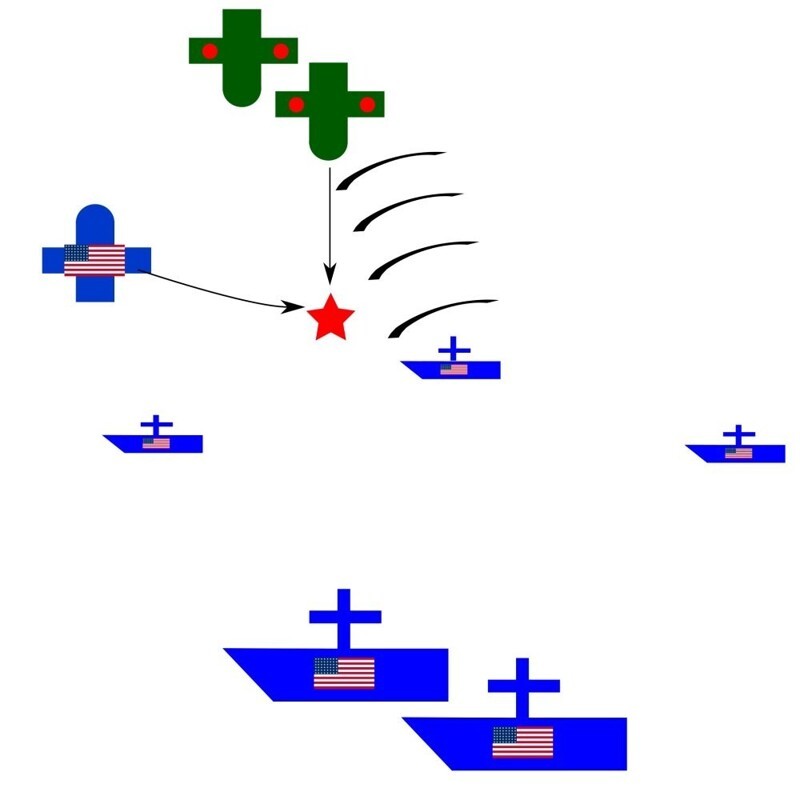
Reisen's last sortie in the war was August 15, 1945. of the year. When 12 302 Kokutai fighters (eight A6M5s and A6M7 and four J2M3) rose from the Atsugi base under the command of Yutaka Morioka. In the same time, nine Reisens 252 Kokutai took off from the Mobar base under commanded by Moriyashi Hidaki. Above Tokyo Bay, the Morioka Group grappled in a fight with six Hellkets from VF-88, accompanying Corsairs in shock version. Americans shot down 8 Japanese while losing 4 their own. In this battle, Morioka, having shot down Hellket, became the last Japanese ace war. But the Hidaki group stumbled upon the English Sefires from 887 squadrons - the aircraft carrier Indefatigable, covering the Avengers. at the cost losing one of their fighters, they shot down eight of the nine Japanese. 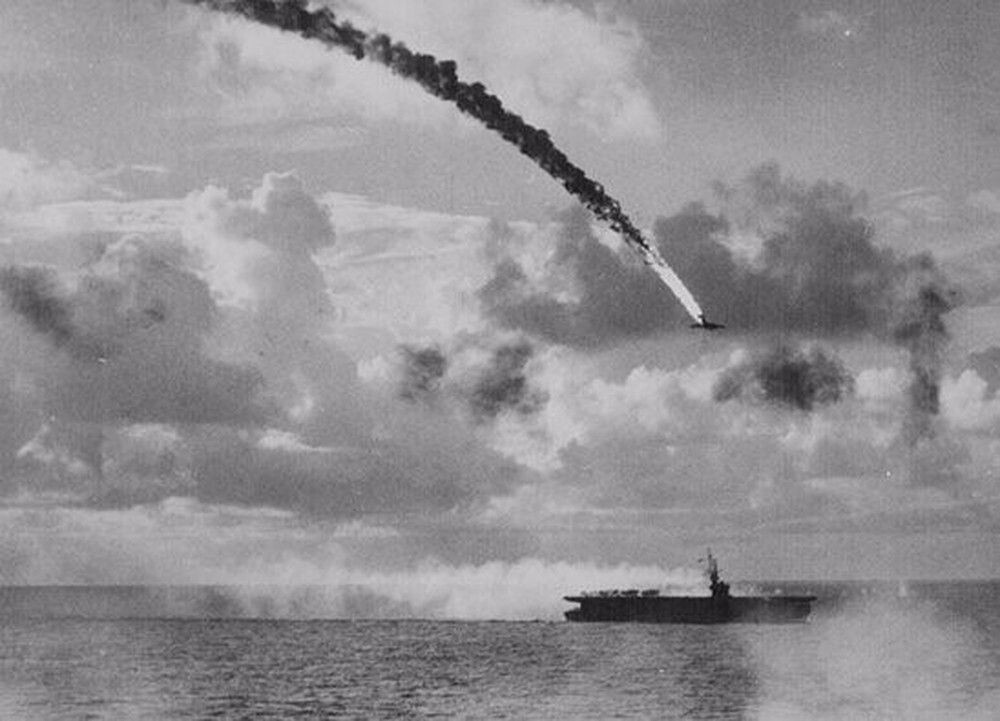
As for aces. Make a reliable ranking of Japanese aces with an exact indication of the victories they won today are practically impossible for a number of reasons.
First, the Japanese did not keep an official record of victories. Japanese the pilots celebrated them privately. Due to this informality, not requiring confirmation, these accounts did not correspond much to the real state of affairs. Yes, even if it were official, it would still be discrepancy. In air combat, it is usually simply impossible to follow the fate of the victim being fired upon, and what is desired is very often mistaken for real.
The Americans, where they could, revealed a discrepancy between applications for victories of Japanese pilots with their real losses. I repeat, this a common thing is the discrepancy between the claimed victories and the actual downed planes. This is typical for the air forces of all warring countries without exceptions.
The very nature of air combat: high speeds, many aircraft around, smoke, clouds, the impossibility in the heat of battle to trace behind the fall of the fired target. Officially approved winning scores fighter pilots of all countries are somewhat at odds with the real side losses. The Americans reduced the number of victories of the Japanese aces. But even in In this case, the Japanese significantly outnumber the US fighter pilots in terms of the number of wins. 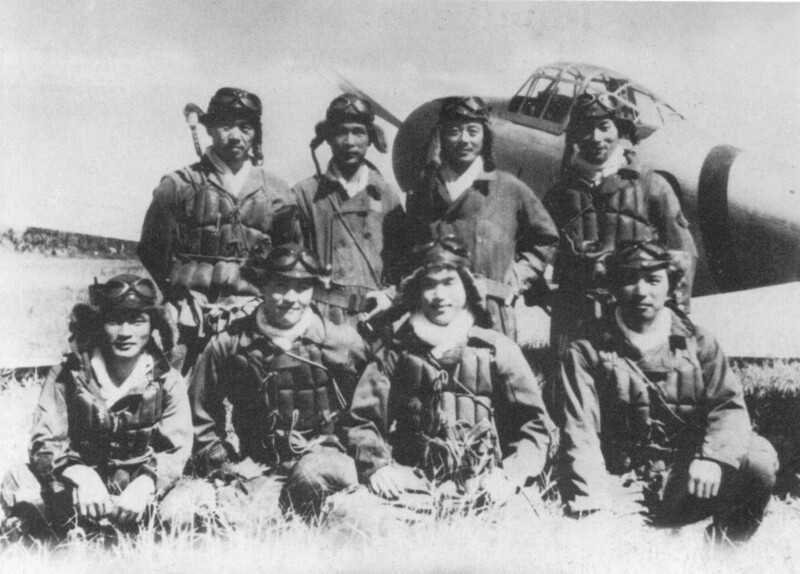
Hiroyoshi Nishizawa (西澤広義, 1920-1944) The number of wins of this the pilot, like most Japanese pilots, is not exactly known. Colleagues of Nishizawa indicate the number of planes shot down by him - from 103 up to 202. 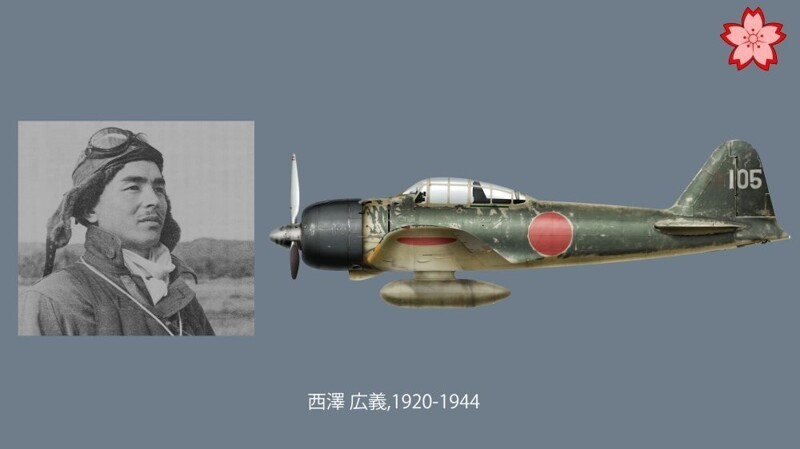
Tetsuzo Iwamoto ((岩本 徹三, 1916-1955) - some researchers consider him the best ace in Japan. Postwar American historians credited Iwamoto with 80 aerial victories, but in Tetsuzo's diary records 202 downed aircraft. 
Souichi Sugita (杉田庄一, 1924-1945) is considered the third the effectiveness of the ace of the Japanese fleet. The Americans record him 70 victories, and Japanese historians believe that the Americans underestimated the number of his victories as at least 40. 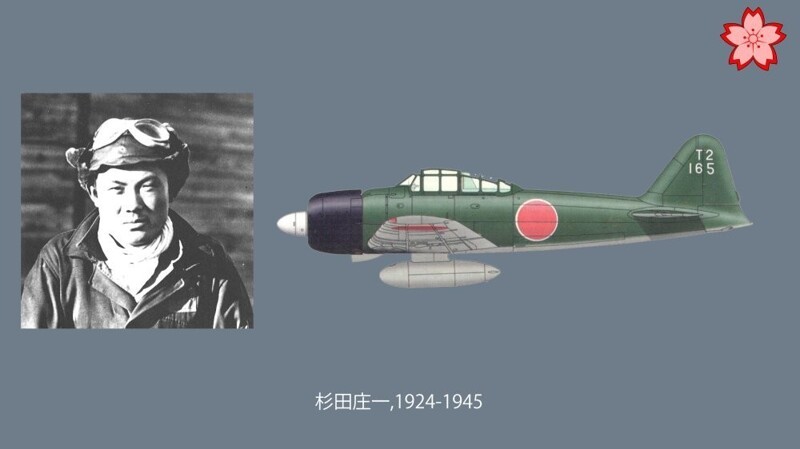
Saburo Sakai (坂井三郎, 1916-2000) 
Takeo Okumura (奥村武雄, 1920-1943) Americans credit him with 54 victories. The Japanese consider this figure underestimated. 
Takeo Tanimitsu (谷水 竹雄, 1919 - 2008) met the outbreak of war with USA Ship Acoustic of Japanese Flota; but after the start of hostilities action, he was sent to an aviation school to train as a fighter pilot. Petty Officer Tanimitsu completed accelerated flight training courses in the spring 1942, after which, until the end of the year, he gained piloting experience in various back parts.
The Americans credit him with 32 victories. 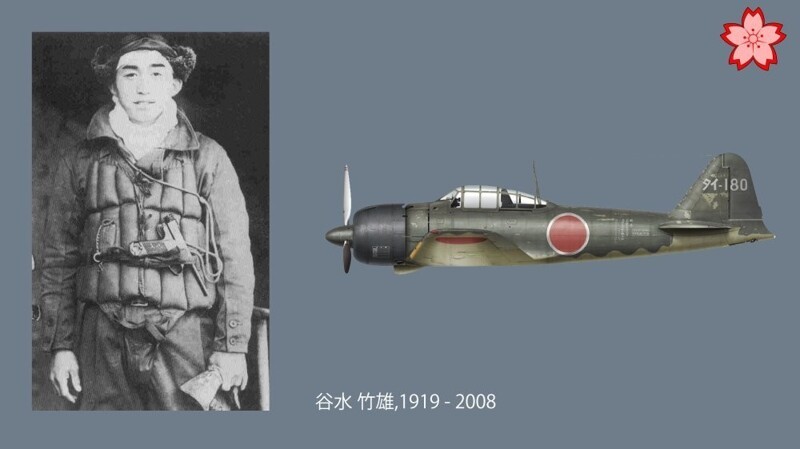
What to say in conclusion?
I'll start by accusing Horikoshi of plagiarism. In 1946 Drew Pearson stated that the A6M Reisen is a development of the Vought V-143. In 1937 the Japanese purchased this aircraft and assigned it the designation AXV-1. By test results, it was decided to abandon the construction this fighter, because according to test pilots, he was inferior even the Ki-27. Obviously, this is a traditional tale about the ruined competitors of ingenious design. Yes, V-143 was available Nakajima. The engineers of this company borrowed the landing gear cleaning system, attaching the engine hood to their Ki-43 and Ki-44. V-143 except USA was also rejected by Argentina. The United States studied the design of the A6M in detail in 1942 d. I see nothing in common in the report. 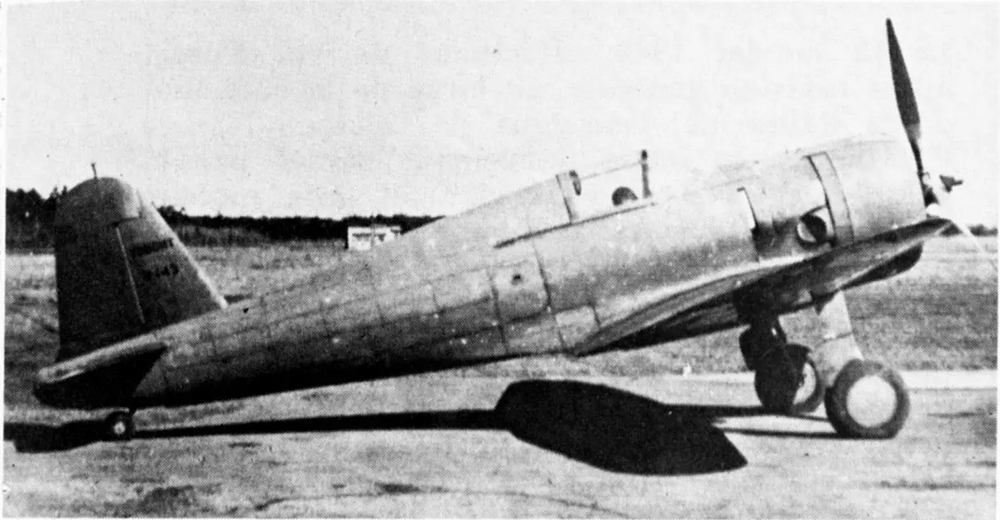
The British also get it with their Gloucester F5/ 34. I believe that the similarity is rather the evolution of designs to customer requirements. They also believe that A5M Claude is a Boeing R-26, Re-2000 is a Seversky R-35, and the MiG-15 is a stolen F-86 Saber. Why Gloucester, if he is magnificent, was not adopted at all, to threaten the Luftwaffe? 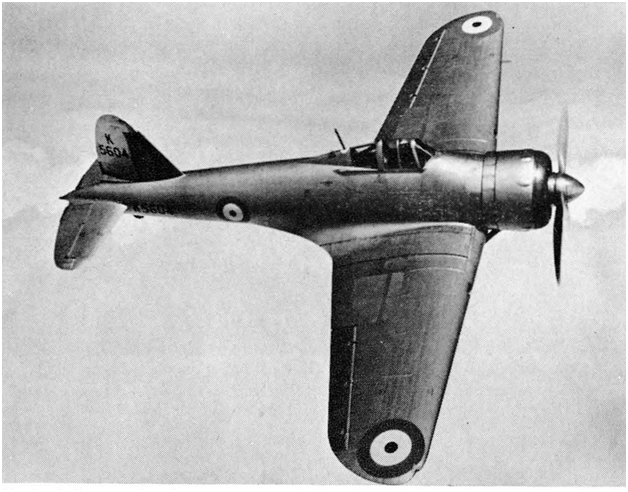
In general, the launch of these exposing theories comes from Western countries that try their failures and miscalculations for something write off. They cannot accept the fact that not only they can do great cars. Yes, Jiro Horikoshi does not deny in his memoirs the fact of using Western technologies: Oerlikon guns, screw Hamilton standard, Bendix radio equipment, etc. Japan like the USSR were chasing. And they caught up with us and the Japanese by leaps and bounds. 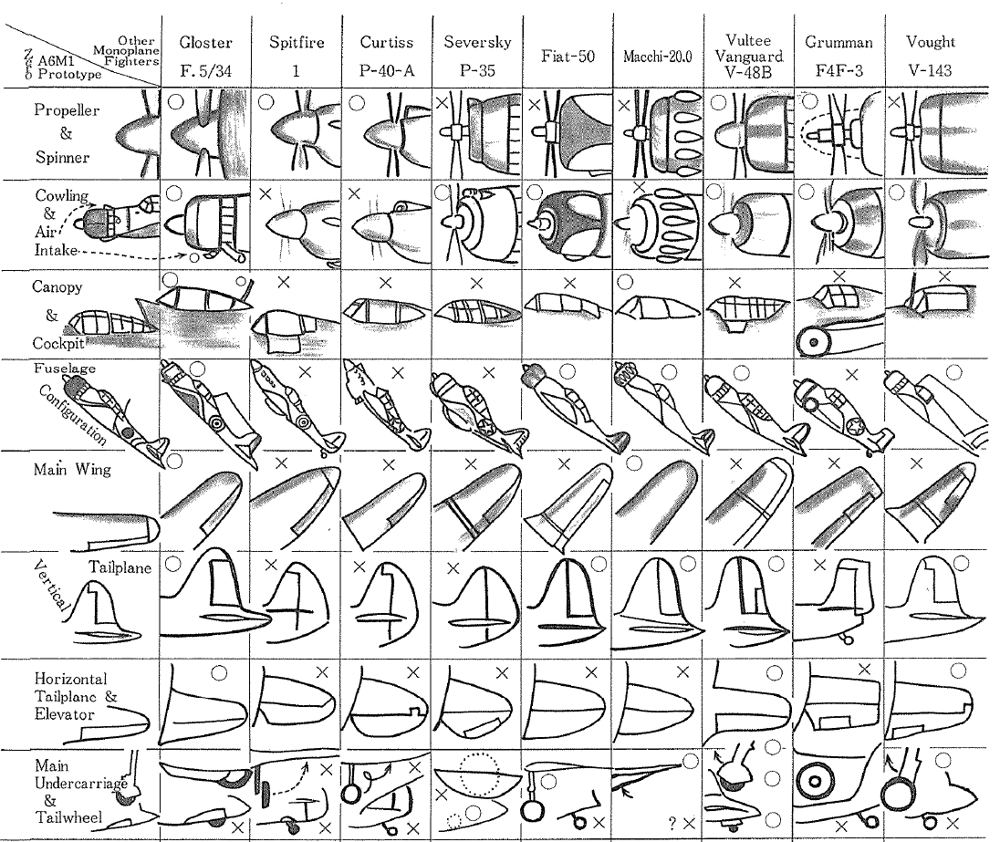
And now my opinion about Reisen is Zero.
I don't think the A6M is the greatest WWII fighter. war. I'll explain why. Yes, without a doubt, Jiro Horikoshi created an excellent fighter for the initial period of the second world war. maneuverable, with huge flight range, which, for example, was not enough for the Germans in the Battle for England, when they could not accompany their strike machines, with a powerful weapons, good rate of climb. He terrified his opponents. But to realize its pluses and level its minuses, the main of which I consider the lack of armor protection of the pilot, could only top notch professionals. In fact, they were the pilots Imperial Japanese Navy pre-war training. Real dream team. Which by the end of 1943 was for the most part knocked out during the fighting on Solomon Islands. Not in Midway. Not there at all. The young replenishment squeezed the maximum out of the car due to lack of combat experience. plus to that moment, the allies massively went into battle Lightnings, Thunderbolts, Corsairs and Hellkets, who replaced the Hurricanes, Buffalo, Wildcats. Important note. Zero was not used by the Japanese on turns in the initial period of the war, and for hit & run tactics, i.e. boom-zoom. The new Allied fighters did not allow them to do so. For example, the R-38 Lightning in its later versions had boosters in the channel roll, which, in addition to the excellent mechanization of the wing, allowed them to fight on turns with Zero and win. And the main deck enemy Hellket held a mountain of hits thanks to its durable and tenacious designs of which Zero could not at all. Yes, armor protection on it too appeared. However, in the autumn of 1944 
The main armament of Zero is a licensed Oerlikon with which we have already met. They are clearly outdated by 1943. The Swiss generally curtailed work on air guns even before the start of the war, and replaced their Japanese could do nothing. They were the only ones who supported this design. in aviation. All countries by that time had abandoned this systems. The radio equipment was also inferior to that of the Allies. But the most important thing is the motor. Sakae had no reserves for forcing at all. We recall that Sakae, like the Soviet M-85 ... M-89 series, is Gnome-Ron 14k Mistral Major. Yes, Mistral Major had small dimensions, but they are not allowed to remove more than 1200 hp from it. Forcing potential is not was. And Zero flew on it throughout the war. More powerful Kinsey motor 1500 hp the military banned it. But it's not only that. The most important thing inwhy they weren't actively working on his successor? He was? Was. A7M Reppu. In 1942, Mitsubishi suspended work on it altogether! The military demanded modernization of the Zero. Who was their Shakhurin? We would have such he became an innocent victim of political repression, suffered neither for what. Mitsubishi spent huge resources to maintain production this obsolete fighter by 1943. But it's not their fault, but military. In general, one gets the feeling that Zero is designed for their samurai psychology. Bushido - the way of the warrior - means death. When for There are two paths to choose from, choose the one that leads to death. That's received weapons for this - from the very beginning, a defenseless aircraft. Zero left Japan's carrier-based fighter aircraft without pilots. On Guadalcanal, the losses of the parties in fighters were almost equal. But here in pilots ... The Japanese are simply catastrophic. All his super characteristics were achieved by re-lightening the design. There is no armor protection, no protectors - any hit leads to fatal consequences. Wildcat, for example, in addition to armor protection has an inflatable raft, a supply of food and other things that will help the downed pilot survive.
Zero is a machine of limiting parameters. Its main the characteristics by which she excelled her opponents are highest maneuverability at low speeds, low stall speed and a wonderful candle. But it should be noted that machines are limiting parameters tend to become outdated quickly. And so it happened. 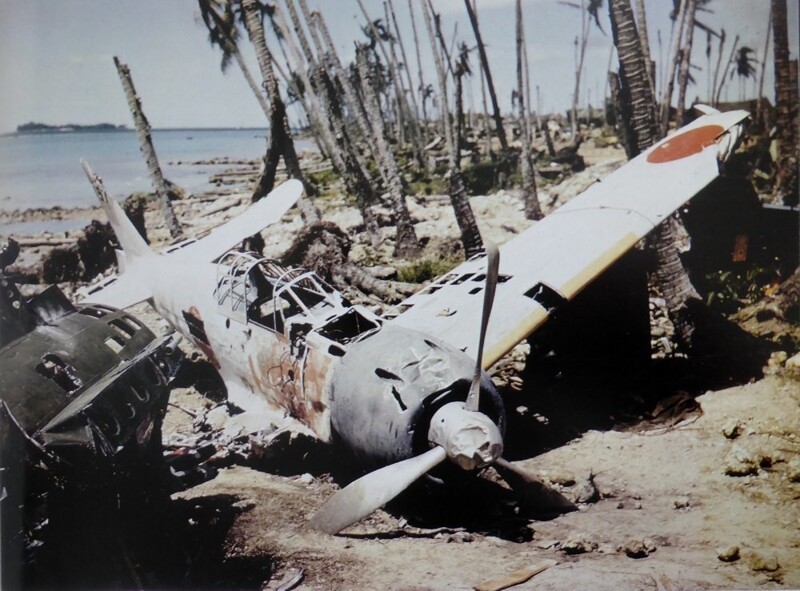
That's all.


